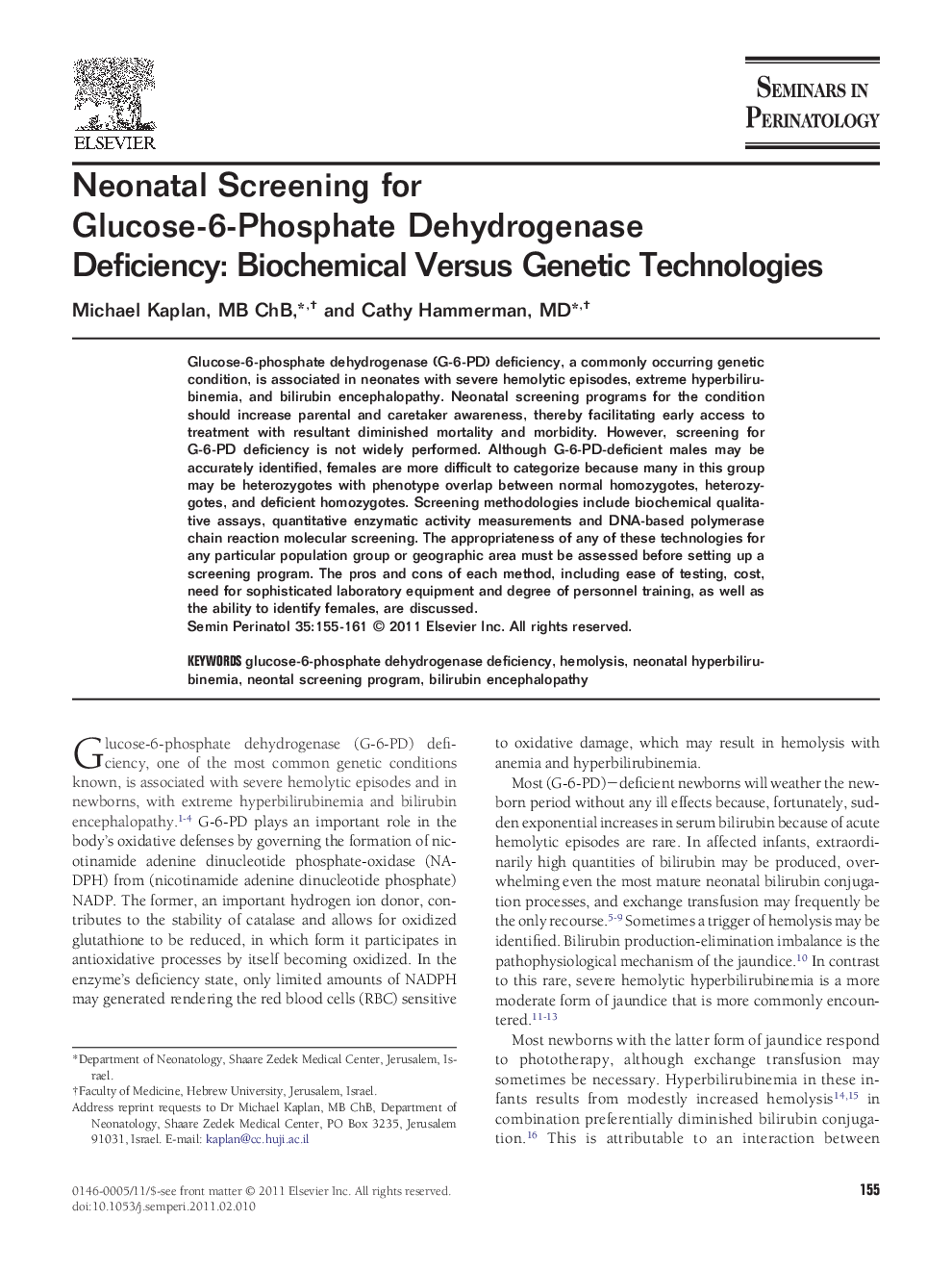| Article ID | Journal | Published Year | Pages | File Type |
|---|---|---|---|---|
| 3836532 | Seminars in Perinatology | 2011 | 7 Pages |
Glucose-6-phosphate dehydrogenase (G-6-PD) deficiency, a commonly occurring genetic condition, is associated in neonates with severe hemolytic episodes, extreme hyperbilirubinemia, and bilirubin encephalopathy. Neonatal screening programs for the condition should increase parental and caretaker awareness, thereby facilitating early access to treatment with resultant diminished mortality and morbidity. However, screening for G-6-PD deficiency is not widely performed. Although G-6-PD-deficient males may be accurately identified, females are more difficult to categorize because many in this group may be heterozygotes with phenotype overlap between normal homozygotes, heterozygotes, and deficient homozygotes. Screening methodologies include biochemical qualitative assays, quantitative enzymatic activity measurements and DNA-based polymerase chain reaction molecular screening. The appropriateness of any of these technologies for any particular population group or geographic area must be assessed before setting up a screening program. The pros and cons of each method, including ease of testing, cost, need for sophisticated laboratory equipment and degree of personnel training, as well as the ability to identify females, are discussed.
